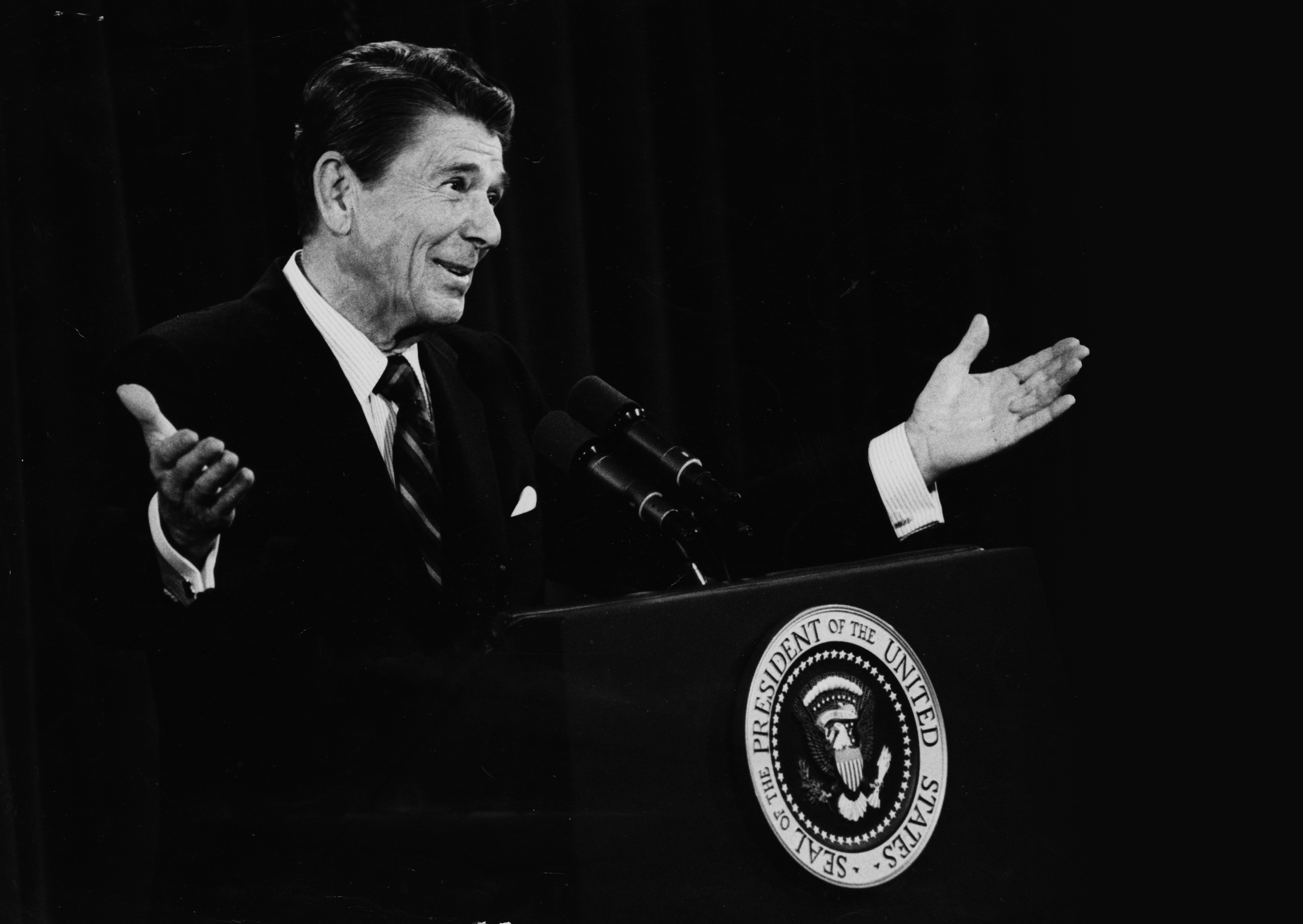The history of tax reform
Republicans want to overhaul the tax code. How did previous reforms lead to the system we have today?

Republicans want to overhaul the tax code. How did previous reforms lead to the system we have today? Here's everything you need to know:
How has the tax code evolved?
Our modern tax system has its roots in the Civil War. To help fund the Union war effort, President Abraham Lincoln signed the first federal income tax into law in 1861, a temporary flat tax of 3 percent on annual incomes above $800. The next year, Congress created what would become the Internal Revenue Service. The wartime income taxes were never meant to be permanent, and lapsed in 1872. When Congress passed another income tax in 1894, it was ruled unconstitutional by the Supreme Court in a 5-4 vote. A progressive income tax became a cause célèbre among progressive-era reformers fighting the gaping inequality of the Gilded Age, leading to the passage in 1913 of a constitutional amendment — the 16th — legalizing federal taxation. Congress imposed the first permanent income tax the same year, with a top rate of 7 percent on annual incomes above $500,000 — about $12.5 million today.
The Week
Escape your echo chamber. Get the facts behind the news, plus analysis from multiple perspectives.

Sign up for The Week's Free Newsletters
From our morning news briefing to a weekly Good News Newsletter, get the best of The Week delivered directly to your inbox.
From our morning news briefing to a weekly Good News Newsletter, get the best of The Week delivered directly to your inbox.
Where did rates go from there?
Mostly up. The U.S. passed massive tax hikes to pay for World War I, including the first version of the estate tax, and raised taxes yet again to finance the enormous costs of World War II. In 1944, the top income tax rate peaked at 94 percent on taxable income over $200,000 — about $2.5 million today.
When did taxes start to come down?
Arguing that the World War II tax regime exerted "too heavy a drag on growth in peacetime," President John F. Kennedy in 1963 called for slashing the top rate for individuals from 91 percent to a "more reasonable" 65 percent. Kennedy's plan met stiff resistance from conservative Democrats and Republicans, who worried about the plan's impact on the deficit. It fell to President Lyndon Johnson to shepherd a bill through Congress, with an emotional appeal to lawmakers after Kennedy's assassination. The Revenue Act of 1964 lowered the top individual tax rate to 70 percent and the bottom rate to 14 percent from 20 percent, while reducing the corporate tax rate from 52 percent to 48 percent. It would be 17 years before the next across-the-board tax cuts passed under President Ronald Reagan.
A free daily email with the biggest news stories of the day – and the best features from TheWeek.com
What did Reagan do?
In his first term, he signed what by some measures remains the biggest tax cut in American history, slashing the top individual rate from 70 percent to 50 percent. Reagan sought even more dramatic changes in his second term, calling for a total revamping of the U.S. tax code. He and his advisers worked with Congress for two years to hammer out the details. The resulting 1986 Tax Reform Act dramatically simplified the U.S. tax code, shrinking the number of tax brackets from 15 to just two, 15 and 28 percent. The bill was also revenue neutral, paid for in part by eliminating $60 billion in tax loopholes and shifting $24 billion in taxes from individuals to businesses.
Why was Reagan successful?
Bipartisanship. Reagan actively courted Democrats, who controlled the House of Representatives, by emphasizing shared goals, such as fewer loopholes for the wealthy, and increasing the standard deduction to benefit low-income families. Reagan also agreed to increase the capital gains tax rate from 20 percent to 28 percent, a key compromise. The president's 60 percent public approval rating undoubtedly helped as well. Nevertheless, the bill faced fierce pushback from industry lobbyists seeking to protect their favorite tax breaks. The legislation heavily targeted real estate tax shelters, for example, which enraged New York developer Donald Trump, who told Congress in 1991 that Reagan's tax reforms had been "an absolute catastrophe for the country."
What has happened since then?
President George W. Bush pushed through a major tax cut in 2001, but Reagan's tax bill remains the last true overhaul of the tax code. Since then, Democratic presidents have raised the top tax rate to 39.6 percent, while under both Republican and Democratic administrations the number of tax brackets has expanded to seven and a cornucopia of new tax breaks and loopholes has been added. The partisan debate over whether cutting taxes fuels growth rages on, though most economists say that the economy is affected by so many factors that the impact of lowering rates is murky at best. The economy boomed after Reagan's first round of tax cuts in 1981, but was also helped by a big drop in inflation and interest rates and increased military spending. The 1986 tax bill was followed by a recession in 1990. Taxes went up under the Clinton administration, but the economy grew even faster than it did under Reagan, buoyed by the internet boom. A Congressional Research Service paper in 2012 found "no correlation between top tax rates and economic growth." Bruce Bartlett, a former adviser to President Reagan who worked on the 1986 tax bill, argues that true reform should be designed to make the system simpler and fairer, not to put more money in wealthy people's pockets. "In reality," he says, "there's no evidence that a tax cut now would spur growth."
The Kansas experiment
Kansas Republicans embarked on what Gov. Sam Brownback called a "real-live experiment" in 2012. The plan eliminated state income taxes altogether for so-called pass-through entities — companies filing their taxes as individuals. Brownback and others argued that the tax cuts would pay for themselves by generating massive economic growth, ultimately allowing the state to abolish the income tax altogether. But that growth never materialized, and Kansas now faces an $889 million budget shortfall over the next two years. The state has been forced to make deep, unpopular cuts to public education, social services, and even highway repairs, while its credit rating has been downgraded. A coalition of Republicans and Democrats reversed most of the tax cuts this year, overriding Brownback's veto. With many of the same economists who advised Brownback working with the national GOP on its tax plan, some Kansas Republicans are warning Congress not to assume tax cuts will pay for themselves. "That won't work, so you better learn our lesson," said state Sen. Barbara Bollier.
-
 The Salt Path Scandal: an ‘excellent’ documentary
The Salt Path Scandal: an ‘excellent’ documentaryThe Week Recommends Sky film dives back into the literary controversy and reveals a ‘wealth of new details’
-
 AI griefbots create a computerized afterlife
AI griefbots create a computerized afterlifeUnder the Radar Some say the machines help people mourn; others are skeptical
-
 Sudoku hard: December 17, 2025
Sudoku hard: December 17, 2025The daily hard sudoku puzzle from The Week
-
 Has Zohran Mamdani shown the Democrats how to win again?
Has Zohran Mamdani shown the Democrats how to win again?Today’s Big Question New York City mayoral election touted as victory for left-wing populists but moderate centrist wins elsewhere present more complex path for Democratic Party
-
 Millions turn out for anti-Trump ‘No Kings’ rallies
Millions turn out for anti-Trump ‘No Kings’ ralliesSpeed Read An estimated 7 million people participated, 2 million more than at the first ‘No Kings’ protest in June
-
 Ghislaine Maxwell: angling for a Trump pardon
Ghislaine Maxwell: angling for a Trump pardonTalking Point Convicted sex trafficker's testimony could shed new light on president's links to Jeffrey Epstein
-
 The last words and final moments of 40 presidents
The last words and final moments of 40 presidentsThe Explainer Some are eloquent quotes worthy of the holders of the highest office in the nation, and others... aren't
-
 The JFK files: the truth at last?
The JFK files: the truth at last?In The Spotlight More than 64,000 previously classified documents relating the 1963 assassination of John F. Kennedy have been released by the Trump administration
-
 'Seriously, not literally': how should the world take Donald Trump?
'Seriously, not literally': how should the world take Donald Trump?Today's big question White House rhetoric and reality look likely to become increasingly blurred
-
 Will Trump's 'madman' strategy pay off?
Will Trump's 'madman' strategy pay off?Today's Big Question Incoming US president likes to seem unpredictable but, this time round, world leaders could be wise to his playbook
-
 Democrats vs. Republicans: who are US billionaires backing?
Democrats vs. Republicans: who are US billionaires backing?The Explainer Younger tech titans join 'boys' club throwing money and support' behind President Trump, while older plutocrats quietly rebuke new administration